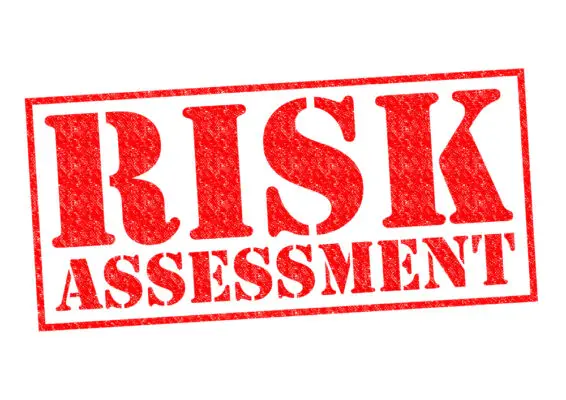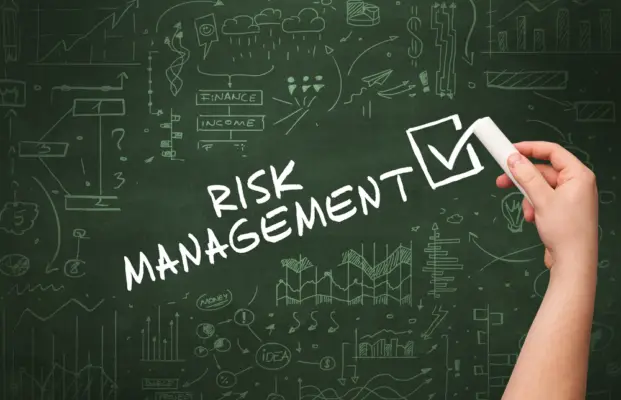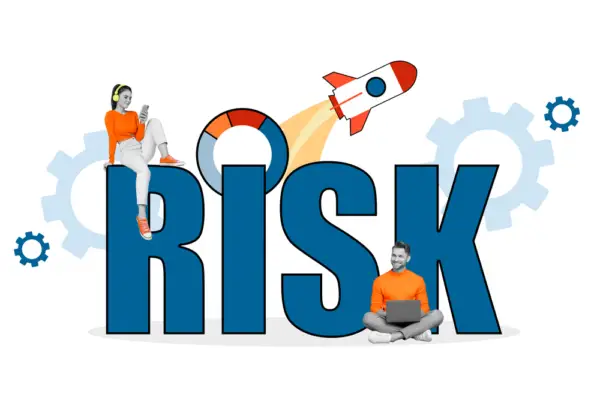Integrated Risk Management (IRM) is a comprehensive approach to managing organisational risks. It involves integrating various risk management processes, such as operational, financial, and strategic risk management.
IRM aims to provide a holistic view of risks faced by an organization, which can help decision-makers identify opportunities for improvement and take proactive measures to mitigate potential threats.
The concept of IRM has gained prominence in recent years due to the increasing complexity and interconnectedness of risks faced by organizations.
The traditional siloed approach to managing risks has proven ineffective in addressing emerging risks that cut across different functions or business units. Through adopting an integrated approach, organizations can better assess their exposure to these risks and develop more effective management strategies.
This article will explore the definition of IRM, its importance, key components, and how it can be integrated into business strategy and decision-making processes.

Definition of Integrated Risk Management
IRM aims to give organisations a holistic view of their risks while aligning them with their strategic objectives.
Implementing IRM can bring significant benefits for organizations, such as improved risk decision-making processes, increased transparency in risk management practices, and enhanced communication among stakeholders.
It also helps identify overlapping risks across various business units and enables efficient allocation of resources towards mitigating those risks.
However, implementing IRM may pose challenges, such as employee resistance due to changes in established risk management practices or lack of understanding about the new system’s benefits.
Technology plays an important role in IRM by providing data collection, analysis, and reporting tools. Technology solutions for IRM can automate manual tasks such as data entry and enable real-time monitoring of risks across different business units.
Furthermore, technology solutions can help identify patterns or trends in data that would be difficult to detect manually.
Integrated risk management is a comprehensive approach that effectively manages all aspects of an organization’s risks. While it offers several benefits, such as improved decision-making processes and increased transparency in risk management practices.
Its implementation may pose challenges for organizations. Adopting technology solutions can help overcome some of these challenges by automating manual tasks and enabling real-time monitoring of risks across different business units.
Importance of Integrated Risk Management
Organizations will understand the interdependencies between different risks and their impact on organizational performance.
Unified Vision of Risk: IRM enables an organization to develop a comprehensive and unified understanding of its risks. With many risk types, ranging from operational and financial risks to strategic and reputational ones, it is essential to have a unified view.
Optimized Decision Making: IRM allows decision-makers to consider risk holistically when making strategic decisions. This helps optimize the trade-off between risk and reward, vital for growth and profitability.
Risk Awareness Culture: By fostering an integrated risk management culture, organizations ensure that all staff members know the risks associated with their actions and decisions. This awareness aids in proactive risk identification and management.
Regulatory Compliance: Regulatory bodies often require organizations to have comprehensive risk management processes. An integrated approach helps satisfy these requirements more effectively and efficiently, minimizing non-compliance risk, which can result in substantial fines or other penalties.
Resilience and Agility: Businesses with effective IRM strategies can respond more quickly and effectively to unexpected events, such as a financial crisis or a global pandemic.
They can better anticipate potential impacts, plan appropriate responses, and rebound quickly from disruptions.
Resource Allocation: IRM assists in determining the most appropriate allocation of resources. By understanding the risk landscape, organizations can make informed decisions on where to invest their resources to mitigate the most significant risks.
Stakeholder Confidence: Investors, customers, employees, and regulators, have greater confidence in organizations that manage risks effectively. This confidence can translate into tangible benefits, such as increased investment, customer loyalty, and staff morale.
Sustainability: With an effective IRM strategy, organizations are better equipped to address long-term sustainability risks, such as those related to environmental, social, and governance (ESG) issues.
This proactive approach can provide a competitive advantage in the increasingly sustainability-focused business environment.
Identifying potential risks and analyzing their potential consequences, businesses can develop strategies that enable them to mitigate these risks effectively.
Additionally, Integrated Risk Management helps organizations align their risk management efforts with their broader business objectives, ensuring sustainable growth while remaining resilient in the face of uncertainties.
Understanding Interdependencies Between Different Risks
Integrated risk management aims to comprehensively identify and manage all potential risks by considering internal and external factors that may impact the organization’s goals and activities.
Mitigating multi-faceted risks requires a holistic approach that considers the interconnectedness of different types of risks.
For example, a natural disaster could not only damage physical assets but also disrupt supply chains, affect workforce availability, and impact customer demand.
Integrated risk management provides a framework for identifying and analyzing these complex relationships between multiple types of risks and prioritizing mitigation efforts accordingly.
Impact of Risks on Overall Organizational Performance
Measuring risk impact involves assessing the likelihood and severity of potential threats to business operations, financial stability, reputation, and other critical areas.
This process requires a comprehensive analysis of all factors contributing to risk exposure, including internal and external factors such as market volatility, regulatory compliance, supply chain disruptions, cyber threats, natural disasters, and geopolitical instability.
Evaluating risk tolerance is another important component of integrated risk management. This involves determining how much risk an organization is willing to accept to achieve its strategic objectives while maintaining reasonable safety and security.
Risk tolerance can be influenced by factors such as industry norms, regulatory requirements, stakeholder expectations, financial constraints, and the nature of the business itself.
Components of Integrated Risk Management
Integrated Risk Management (IRM) involves identifying, assessing, and managing organisational risks.
The components of IRM include:
- Risk assessment
- Risk mitigation
- Risk monitoring
- Risk reporting
To effectively manage organisational risks, each component must be addressed and executed in coordination.
Risk Assessment
Evaluating potential hazards and uncertainties in a given scenario is akin to peeling away the layers of an onion, revealing deeper levels of complexity that may require further analysis before drawing any conclusions.
Risk assessment involves two main steps: risk identification and risk evaluation. Risk identification involves identifying and documenting all potential risks within a given scenario.
Risk assessment requires a thorough understanding of the context, objectives, stakeholders involved, and internal/external factors that could impact the outcome.
Once all potential risks have been identified, the next step is to evaluate them by assessing their likelihood and impact on achieving the desired outcome.
Risk assessment aims to prioritize risks based on their severity level so that resources can be allocated effectively to mitigate or manage them accordingly.

Risk Mitigation
Risk mitigation involves creating a safety net that protects against potential hazards, similar to how a sturdy roof protects a house from the elements.
Risk mitigation strategies are implemented to minimize negative impacts on an organization’s operations, profits, and reputation. These strategies include technology, insurance policies, contingency plans, and training programs.
Risk identification techniques are important in determining which risks require mitigation efforts. Once identified, organizations can prioritize these risks and determine which ones pose the greatest threat to their business objectives.
Companies can save themselves from significant financial loss or reputational damage by managing these risks before they materialize into negative events.
It is important for organizations to continuously monitor their risk landscape and adjust their risk mitigation strategies accordingly.
Risk Monitoring
Effective monitoring of potential hazards is essential for organizations to ensure that their risk mitigation strategies remain up-to-date and relevant.
Risk monitoring techniques involve a proactive approach to identifying potential threats and assessing the likelihood of occurrence and impact on the organization’s operations.
This involves continuous surveillance, analysis, evaluation, and reporting on internal and external factors affecting the organization’s performance.
The role of technology in risk monitoring has become increasingly important as organizations face more complex risks.
Technology-based solutions such as artificial intelligence (AI) algorithms, predictive analytics, big data analytics, and machine learning are now used to enhance risk monitoring capabilities.
These technologies can help organizations identify patterns and trends in data that could signal potential hazards. They can also provide real-time alerts that enable swift responses to mitigate or avoid risks altogether.
As such, technology has become a critical component of effective integrated risk management frameworks by enabling organizations to monitor evolving risks comprehensively and proactively.
Risk Reporting
Effective risk reporting is a critical component of integrated risk management, as it allows decision-makers to make informed choices that can mitigate risks and protect their organization’s reputation.
Risk reporting involves identifying, assessing, analyzing, and communicating all potential hazards to internal and external parties.
Risk communication must be tailored to the audience’s needs and should be clear, concise, and easily understood. Ensuring that all stakeholders receive the necessary information promptly to respond appropriately is essential.
Organizations must prioritize developing robust risk reporting systems that provide relevant information promptly so they can manage risks effectively.
Integration of Risk Management into Business Strategy and Decision-Making Processes
Strategically incorporating risk considerations into business decision-making processes can help organizations optimize their operations and achieve long-term success.
Integrating risk management into business strategy involves leadership in setting the tone for how risks are perceived and managed within an organization. Leaders must establish a culture that promotes transparency, accountability, and proactive identification of potential risks.
Organizational culture is crucial in integrating risk management into business strategy and decision-making processes. Culture affects how employees perceive and respond to risks and their willingness to report potential issues.
A positive organizational culture encourages employees to speak up about potential risks without fear of retaliation or punishment. Such openness allows leaders to promptly address issues before they escalate into larger problems that could have severe consequences for the organization.
Integrating risk management into business strategy requires more than just identifying potential threats; it also involves making informed decisions based on accurate data analysis.
Organizations must develop robust data analytics capabilities to identify trends and patterns in past incidents, predict future risks accurately, and make strategic decisions based on these insights.
Integrating data analytics with risk management enables organizations to anticipate emerging threats proactively, identify opportunities for improvement, and make informed decisions that drive long-term success.
Implementation of an Effective IRM Framework
Integrating risk management into business strategy and decision-making processes is crucial to effectively identify, assess, and manage risks. However, successfully implementing an integrated risk management (IRM) framework requires more than a theoretical understanding of its importance.
It necessitates a practical approach involving all stakeholders’ collaboration in the organization.
One key aspect of implementing an effective IRM framework is IT implementation. In today’s technology-driven business environment, it is imperative to use IT tools to enhance risk management practices.
This includes using automated systems for data collection and analysis, real-time monitoring for early detection of potential risks, and reporting capabilities for better decision-making.
Another essential component in implementing an effective IRM framework is stakeholder involvement. Engaging all stakeholders helps ensure their perspectives are considered when identifying risks and developing mitigation strategies.
This includes top-level executives and employees at all levels who may have critical insights into operational risks or emerging threats.
Organizations can develop a robust system to identify, assess, and manage risks effectively. Ultimately this leads towards long-term success by mitigating threats before they become significant issues impacting organizational objectives or reputation without hindering growth opportunities.
Innovation efforts within enterprises and ensuring compliance with regulatory requirements around managing enterprise-wide risk appropriately without sacrificing agility.
Required from modern businesses operating under volatile circumstances constantly evolving due to various factors beyond control, such as market dynamics shifts or geopolitical risks.

Frequently Asked Questions
What are some common challenges faced when implementing an integrated risk management framework?
One such challenge is conducting effective risk assessments that accurately identify potential risks and their potential impact on the organization. It requires a thorough understanding of the organization’s operations and the ability to collect and analyze relevant data.
Another common challenge is developing and implementing appropriate risk mitigation strategies that effectively address identified risks while minimizing negative impacts on the organization’s operations.
This may involve coordinating efforts across various departments or stakeholders and ensuring compliance with relevant regulations and industry standards.
Implementing an integrated risk management framework requires a comprehensive approach that considers all aspects of the organization’s operations, including its culture, processes, and stakeholder relationships.
How does integrated risk management differ from traditional risk management approaches?
One of the key differences lies in how risks are identified and assessed. In traditional risk management, risks are typically identified and assessed on a siloed basis, with each department or team responsible for managing its own risks.
This can lead to a fragmented approach that fails to consider the broader organizational context or interdependencies between different types of risks.
As a result, organizations can better anticipate potential threats and take proactive steps to mitigate them before they become major issues.
What role do technology and data analytics play in integrated risk management?
Specifically, data visualization tools enable organizations to comprehend complex risks better and identify potential vulnerabilities.
Additionally, machine learning applications allow for detecting patterns and anomalies in large datasets that may have otherwise gone unnoticed.
Incorporating these technologies into their risk management processes, organizations can improve their ability to proactively identify and mitigate potential threats to their operations.
How can businesses measure the success of their integrated risk management efforts?
One way to measure success is by identifying gaps in the system and addressing them accordingly.
For instance, a hypothetical case study could involve a financial institution implementing an integrated risk management plan but still experiencing losses due to fraud.
Analyzing the situation and identifying gaps in their system, such as inadequate training for employees on detecting fraudulent activities, they were able to improve their risk management efforts and prevent similar incidents from occurring in the future.
Can integrated risk management be applied to all organizations, regardless of size or industry?
Despite its benefits, small businesses may face certain limitations in implementing IRM due to resource constraints.
Nonetheless, case studies have shown the successful implementation of IRM across diverse industries, including healthcare, finance, and manufacturing. For instance, the healthcare industry has leveraged IRM to improve patient safety by identifying potential hazards in clinical processes and implementing preventative measures.
On the other hand, the finance sector has utilized IRM to mitigate risks associated with credit default by adopting a proactive approach towards credit monitoring and assessment.
Numerous examples of successful application of this approach across diverse industries can serve as best practices for organizations seeking to adopt an integrated risk management framework.

Conclusion
Integrated Risk Management (IRM) is a comprehensive and proactive approach to identifying, assessing, mitigating, and monitoring organisational risks. Integrating various risk management activities into a cohesive framework enables decision-makers to make informed decisions based on accurate risk assessments.
An effective IRM framework includes risk identification, assessment, mitigation, monitoring, reporting, and communication. Integration of these components into the business strategy and decision-making processes is crucial for ensuring that risks are managed effectively at all levels of the organization.
Implementing an IRM framework requires collaboration among various stakeholders within the organization.
Integrated Risk Management is vital for organizations seeking to manage risks effectively in today’s dynamic business environment. Through its holistic approach to risk management, IRM enables organizations to identify potential threats before they occur and take proactive measures to mitigate them.
An effective IRM framework ultimately helps organizations achieve their strategic objectives by ensuring that risks are managed proactively rather than reactively.

Chris Ekai is a Risk Management expert with over 10 years of experience in the field. He has a Master’s(MSc) degree in Risk Management from University of Portsmouth and is a CPA and Finance professional. He currently works as a Content Manager at Risk Publishing, writing about Enterprise Risk Management, Business Continuity Management and Project Management.

